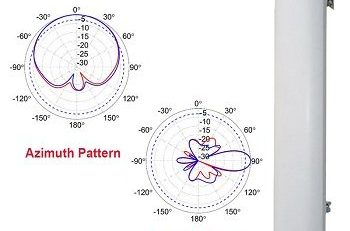Base Station Antenna Market to Show Solid Growth up to 2022
According to a report published by Radiant Insights, the global Base Station Antennas market will grow at a significant CAGR of 15.3% through 2022.
Rise in the mobile subscriber base, development of omni-directional base station antennas, and enhancing broader area connectivity are documented as the major factors of base-station antennas market that are estimated to enhance the growth in the years to come. However, high maintenance and installation cost may restrain overall market growth in the years to come. The Base-station antennas market is segmented based on type, application, and region.
The report explores the growth in Multi-band and single-band base-station antennas in the forecast period. The market may be categorized based on applications like computer networking, wireless communications, and others that could be explored in the forecast period. The market is segmented geographically into Americas (North America, and Latin America), Europe (Eastern Europe, Western Europe), Asia Pacific (India, China, Japan, New Zealand, and Australia), Latin America (Mexico, Argentina, and Brazil), Middle East (UAE, Saudi, and Qatar) and Africa (South Africa).
According to the report, Asia Pacific accounted for the substantial market share of Base Station Antennas in 2014 and is estimated to lead the overall market in the coming years. The reason behind the overall market growth is the development of enhanced mobile communication technologies and growing number of mobile subscribers. The developing countries like India and China are the major consumers of Base Station Antennas in this region. North America and Western Europe are also estimated to have a positive influence on the future growth of this industry.
The key players in the market include Panorama Antennas, CommScope, Huawei, Amphenol, Filtronic, Ace Technologies Corporation, Cobham Antenna Systems, Comba Telecom, Carlson Wireless Technologies, ProSoft Technology, Bird Technologies, and Rosenberger. These players are concentrating on inorganic growth to sustain themselves amongst fierce competition.
The report segments the market and forecasts its size, by volume and value, on the basis of application (2G, 3G, 4G, 5G, etc.), and by geography (North America, Europe, Asia-Pacific, MEA and South America).
The report covers forecast and analysis for the base station antennas market on a global and regional level. The study provides historic data of 2012-2016 along with a forecast from 2017 to 2022 based on both output/volume and revenue. It then describes the drivers and restraints for the market along with the impact they have on the demand over the forecast period. Additionally, the report includes the study of opportunities available in the base station antennas market on a global level.
The report has been prepared based on the synthesis, analysis, and interpretation of information about the global base station antennas market collected from specialized sources. The competitive landscape section of the report provides a clear insight into the market share analysis of key industry players. Company overview, financial overview, product portfolio, new project launched, recent development analysis are the parameters included in the profile.
Demand for this market rises from the 2G, 3G, 4G, 5G, and other applications. All the segments have been analyzed based on present and future trends and the market is estimated from 2017 to 2022. Relevantly, the report and company profiles specify the key drivers that are impacting the demand in global base station antennas market.
Click here to read the full report.









